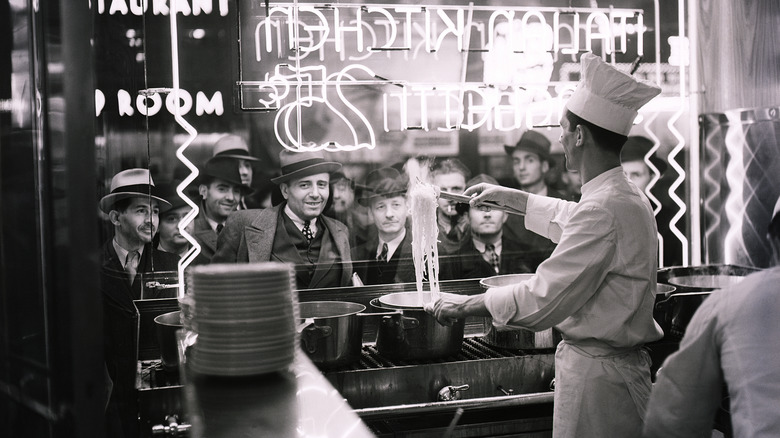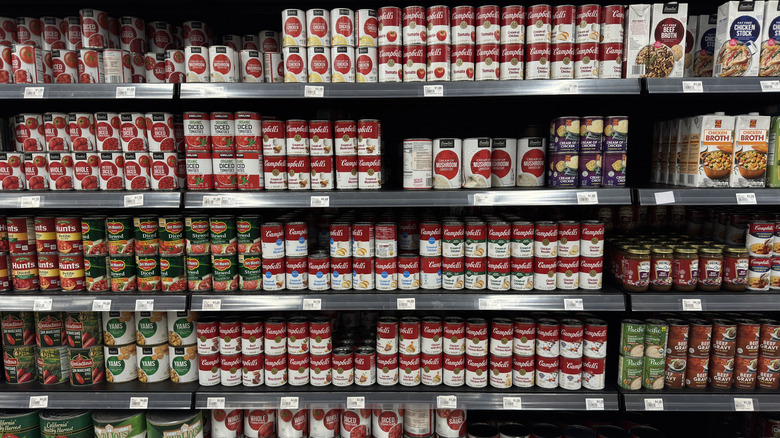The Retro Pasta Dish That People Loved To Eat In The 1930s
Irish-Italian spaghetti is one of those dishes that's hard to categorize but easy to remember. First published in Better Homes & Gardens in the 1930s, it starts with a base of ground beef and onion simmered together, then folded into a sauce made from two cans of condensed soup — tomato and cream of mushroom. A few shakes of chili powder, hot pepper sauce, cayenne, and black pepper add spice, while a final snow of Parmesan over the spaghetti rounds it out. The result isn't quite Italian ragù and certainly not Irish stew — it lands somewhere in between, resembling a pasta hotdish that's hearty, thrifty, and undeniably American.
Flavor-wise, it's not refined, but it is comforting. The sauce gloms onto the noodles with a salty‑sweet richness and just enough heat to keep things interesting. Some modern tasters say it channels the same spirit as spaghetti you'd scoop up on a plastic cafeteria tray, while others insist it brings to mind weeknight dinners at grandma's table.
Some recipes amped up the kick with Tabasco and extra beef, while others called for ground coriander, a subtle twist that transforms the sauce without changing its spirit. These little variations show how a simple Depression-era style recipe could be adapted endlessly, keeping the dish both practical and personal. It's a spaghetti recipe that'll remind you of your childhood — built from pantry staples and handed down through generations as a symbol of comfort more than refinement.
The all-American origins of a misfit pasta
Despite its name, Irish-Italian spaghetti has little to do with either Ireland or Italy. You won't find potatoes, cabbage, or lamb — the kinds of ingredients you'd expect in an Irish dish — nor is there much that's authentically Italian about canned soup sauce. Instead, this quirky recipe seems to have sprung from American kitchens, when families were stretching pantry staples into meals that could feed a crowd.
It's believed the dish gained traction during the final years of the Depression and into WWII rationing. Canned soups, inexpensive ground beef, and dried pasta were all accessible ingredients, and recipes like this were exactly the types of dishes that made their mark during the Great Depression. When the original Better Homes & Gardens recipe resurfaced online, Facebook commenters noted it may not look appealing now, but families at the time "had to make do" with what was available during years of shortages and uncertainty. Whether it was purely thrift or simply clever marketing, it fit the moment.
The dish could have been a playful nod to immigrant mash-ups, or maybe it was tacked on purely for novelty. Whatever the reason, this won't have you eating like an Irishman for St. Patrick's Day — it's purely an American creation, stitched together from resourcefulness and a touch of culinary curiosity.

